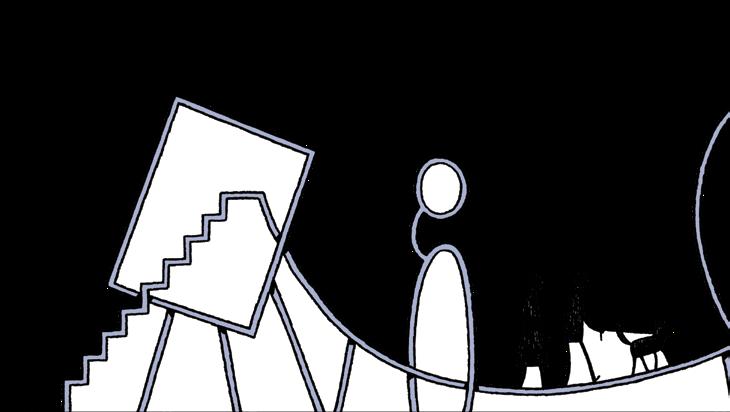Overlooked Britain
Paradise, by way of Kensal Green lucinda lambton London’s first great necropolis hosts a perpetual party of 19th-century luminaries
Nothing could be more enlivening than a walk round Kensal Green Cemetery in London, the capital’s first great necropolis, founded in 1832. Whatever your passion, with all those who are buried here, the inventors, writers, entertainers etc – every one of them of them of top-notch interest – the very essence of their roots and shoots can be joyfully relished within these walls. Surrounded by the scrunching cityscape of the Harrow Road, it suddenly appears; a vast tract of Arcadia, a place that makes your spirits soar to screaming delight. Trollope lies here, as does Sir Charles Locock, who delivered all Queen Victoria’s children. Blondin the tightrope-walker is buried at Kensal Green; so too is W H Smith – with a marble book atop his grave. Charles and Fanny Kemble, father and daughter thespian stars, are here, as well as John Smith, harpist to Queen Victoria! Greeting you, among the bulgingly mature chestnut, ash, plane, holly and beech, is a Gothic spire to Feargus O’Connor (1794-1855), the charismatic Chartist leader. He died insane, and crowds of 50,000 came to his funeral at Kensal Green. Here is a Gothic canopy, sheltering the remains of George Augustus Frederick Percy Sydney Smythe, 7th Viscount Strangford (1818-57). He was believed to be the last man to have fought a duel in England, when in 1852 he exchanged shots with his political rival in Canterbury. Described by Disraeli as ‘a man of brilliant gifts, of dazzling wit, of infinite culture, and of fascinating manners’, he was the model for the hero of Coningsby. He died aged 40, worn out by dissipation, brandy and water, and a
delicate chest. ‘Poor George,’ lamented Lord Lyttelton at the time; ‘he was a splendid failure.’ Your next goal is the stone slab surrounded by railings, to William Makepeace Thackeray (1811-63), author of Vanity Fair, The Luck of Barry Lyndon etc. Dwell for a moment on his funeral, which took place here in 1863. Dickens was one of the chief mourners, as were the painters Millais and Frith. George Cruickshank the caricaturist was also there, as were Browning and Trollope. According to a contemporary account, there were occasional melancholy interruptions of weeping but ‘more obtrusive were the cracks of sportsmen’s rifles from the neighbouring fields, causing the horses to champ their bits in noisy restlessness’. It must have been a mighty coffin as Thackeray was over six feet three inches tall and his vast head housed a brain weighing 58½ ounces. With the path becoming ever more rural in its roughness and the trees ever more enveloping, you turn right onto an even tinier, grass path. There you find a block of marble to Isambard Kingdom Brunel (1806-1859), along with his father, Sir Marc Isambard Brunel (1769-1849). Brunel senior designed the Thames Tunnel, while his son was responsible for the triumphant design of bridges, steamships and railways. The Great Western, passing hard by the cemetery, is in thundering earshot of his final resting place. Your next stop should be the newly restored four-poster-bed-like canopy sheltering the remains of William Mulready RA (1786-1863). With his face carved from his death mask, he lies on a wonderfully ‘woven’ stone mat of straw,
From left: Isambard Kingdom Brunel, Wilkie Collins, Charles Blondin, Dr James Barry 82 The Oldie September 2021
on a fringed bier, beneath which are carved scenes and implements of the artist’s life. The son of an Irish leatherbreeches-maker, he was to design the first one-penny prepaid envelope, as well as becoming an artist and prolific illustrator. Now for a quite tremendous treat – the Egyptian mausoleum to Andrew Ducrow (1793-1842), a showman of dazzling appearance and ability, who, while dressed as a Roman statue, would ride or drive as many as nine horses at once. He was famed too for ‘poses plastique équestre’; striking attitudes as Zephyr, Mercury or a Yorkshire fox hunter, while controlling horses at the gallop. He died in 1842, a few days after his favourite horse, John Lump. His hat and gloves – of stone – lie at the door of his extravagant mausoleum.






































